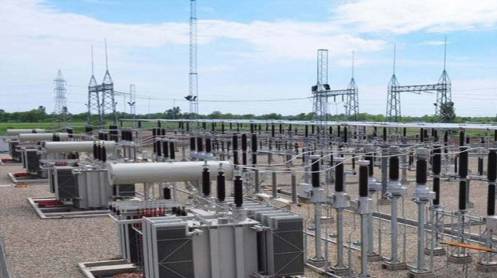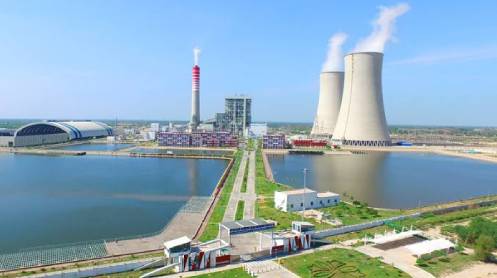ISLAMABAD: Caretaker Minister for Power and Petroleum, Muhammad Ali, has set an extremely ambitious circular debt reduction plan amounting to Rs 1,268 billion for caretaker Finance Minister Dr Shamshad Akhtar for onward sharing with the International Monetary Fund (IMF) for its concurrence, well informed sources in Finance Ministry told Business Recorder.
“Concurrence from IMF shall be required highlighting a rare opportunity to settle energy sector CD stock of Rs 1,268 billion using funding from the government of Pakistan (GoP) for one to two days.
The proposal is not contrary in any manner to MoF’s commitment with regards to supplementary grants as the SG required for this CD settlement is budget neutral and will be returned with an extra amount for the GoP and tax revenues for FBR.
Jul-Dec power sector circular debt soars to Rs2.55trn
Ministry of Energy’s team would like to make a detailed presentation to IMF and answer their queries and concerns, if any,“ said the caretaker Minister for Power and Petroleum in his letter to caretaker Finance Minister.
The final proposal shall be approved by the Federal Cabinet including formation of proposed Working Group (WG) of Secretaries from Power, Petroleum and Finance Divisions to execute the plan and negotiate with entities involved with waiver of Late Payment Surcharges (LPS).
Board of Directors of the entities involved in the settlement shall approve the scheme. Respective Divisions shall complete the documentation for the issuance and return of supplementary grant of PKR 745 billion under the supervision of the WG.
The caretaker Minister for Power and Petroleum, in his letter of January 26, 2024 referred to the meeting held under the chairmanship of caretaker Prime Minister, Anwaar-ul Haq Kakar. He said that it is the same plan shared on January 17, 2024 but elaborations to address the concerns raised in the meeting are added to the proposal.
Muhammad Ali further stated that based on inter-ministerial reporting as at November 30, 2023, the overall Energy CD has touched Rs 4,559 billion in principal entailing LPS to the tune of Rs 1,167 billion.
Petroleum sector CD is Rs 3,022 billion, more than 70% of which is owed to E&P companies on account of gas and oil supplies and 27% is owed to LNG importers. Power sector CD is Rs 2,704 billion owed to IPPs, PHPL, government-owned power plants (GPPs) and WAPDA by 34%, 28%, 19% and 9%, respectively.
In order to ensure availability of energy at affordable prices to the public, but not at the cost of sustainability of energy sector companies, the tariff adjustments in Petroleum and Power sector have been timely during the caretaker tenure to stop any further CD stock accumulation.
This has been a critical requirement of the IMF program also. However, considering the existing inflationary pressures and the economic downturn that the nation faces, there is little space for putting the onus of circular debt on consumers’ pockets.
The proposal stipulates that despite the fact that the ultimate liability of the CD stock is sovereign, the risk of the CD stock is borne by the supplier companies – PSO, IPPs, OGDCL, PPL, etc. Factually, though there is no budgeted subsidy for the Petroleum sector, an amount of Rs 976 billion was budgeted during FY 23-24 for the power sector CD flow stoppage.
Section 4 of the IMF’s Staff Report, which is part of IMF Country Report No. 231260, highlights the magnitude and severity of the energy (power) sector circular debt stock which had risen to a new historical high of Rs 2.5 trillion (3 percent of GDP), at the time of the finalisation of the report, mainly on account of CD flow overruns of Rs 387 billion (0.5 percent of GDP) relative to the Circular Debt Management Plan (CDMP) from early FY 23.
IMF identified key drivers as policy slippages and slow progress with structural cost-side reforms.
Muhammad Ali emphasised that even though CD flow has been contained through financial, as well as, structural interventions, the CD stock is a major risk faced by the country’s financial system. In addition to the current Power CD stock level of Rs. 2,703 billion, the finance cost of this CD stock alone in FY 2023-24 was estimated at around Rs. 463 billion (@approx. KIBOR + 2% per annum).
Around Rs. 286 billion out of this finance cost was assigned to the electricity consumers, collected in the form of FC Surcharge @ Rs. 3.23 per unit through monthly electricity bills. The remaining amount is financed by the Government through the budget.
“If the petroleum sector CD stock is to be recovered from the consumers, it will require a 4.3 times tariff rise for all natural gas consumers, i.e., – Rs 5,800/mmbtu increase on Sui Gas Companies (SUIs) network to clean the stock over one year. In the same manner, if the Power CD stock is to be financed by the electricity consumers and brought to zero, this will entail an additional per unit charge of Rs. 24.5.
Therefore, while the menace needs to be addressed on a fire fighting basis, there is no more room for power and petroleum consumers to bear this burden,“ he contended. It is recognized for the first time that Petroleum CD and Power CD are not mutually exclusive stocks. In fact, there is a common intersection between the two which amounts to around PKR 396 billion of principal outstanding balances.
“Had there been no financial constraint on the sector, the companies would have had greater ability to pay dividends which federal government would have used to pay its expenses or subsidies.
In a normal payment mechanism, supplementary grants will be used as a source of settlement but through a mechanism of end- to-end settlements the supplementary grants shall be fully returned to the Government through dividends,“ claimed the Minister in his proposal.
He further stated that there will be no non-cash transactions and the MoF needs to commit supplementary grant for only two days which it will receive back fully along with additional income of Rs 3.4 billion.
An attempt will be made to reduce the two-day period for funds usage to one day (8 hours) and complete the entire fund flow and transactions starting at 9 am and ending by 5 pm the same day. Dividends will entail payment to minority shareholders thus FBR’s tax collection will increase by Rs 24.2 billion.
According to the proposal, many companies in the E&P sector do not record LPS receivables despite their contractual backing in order to avoid tax exposure. The proposed scheme will benefit from this fact and package the settlement for principal outstanding balances with write off of LPS balances (up to Rs133 billion) throughout the supply chain.
Muhammad Ali further proposed issuance of Technical Supplementary Grant (TSG) of Rs 82 billion for OGDCL to settle principal TFCs issued in 2012, Rs 46 billion for CPPA-G for Energy Purchase Price (EPP) payment of RLNG based power plants i.e. Haveli Bahadur Shah and Balloki and Rs 29 billion for PSO for prior year receivables on account of LNG diversion.
He requested caretaker Finance Minister for issuance of Supplementary Grant (SG) of Rs 745 billion for two days, i.e., Rs 386 billion for SNGPL for settlement of E&P company receivables, Rs 259 billion for SSGCL for the same purpose and Rs 100 billion for CPPA-G for capacity payment of RLNG based power plants Haveli Bahadur Shah and Balloki.
The SGs are planned in a manner to not exceed the tariff differential receivables on the books of SUIs and those of CPPA. The payments planned shall not exceed the CD receivables in any of the entities.
According to the proposal, supplementary grants will be returned through dividends announced by the entities where the funds are eventually parked after settling all the circular debt throughout the chain.
The catch is that GoP’s share out of the dividends announced by the entities whose circular debt receivables are being settled through grants, shall be PKR 3 billion in excess of the supplementary grant originally issued for the scheme, i.e., Rs 745 billion.





